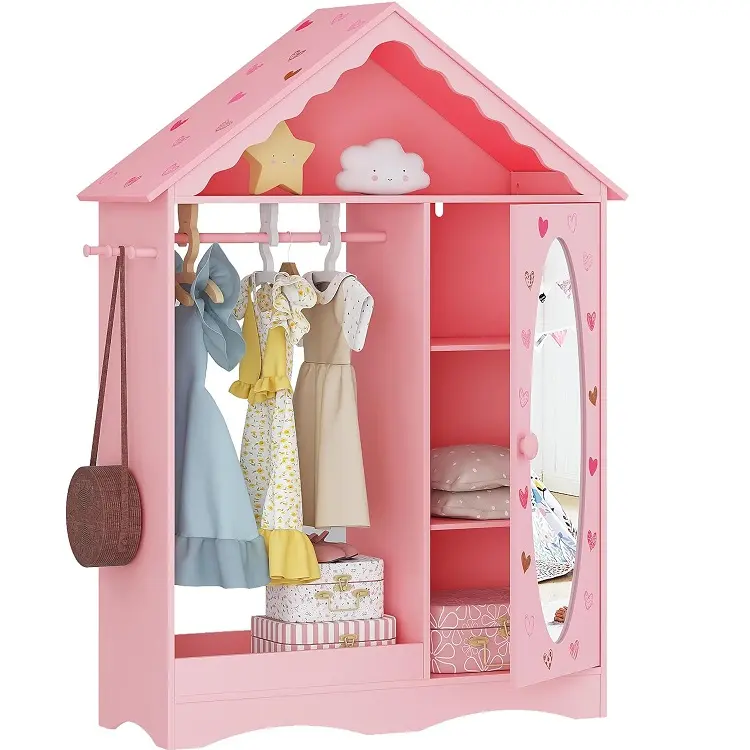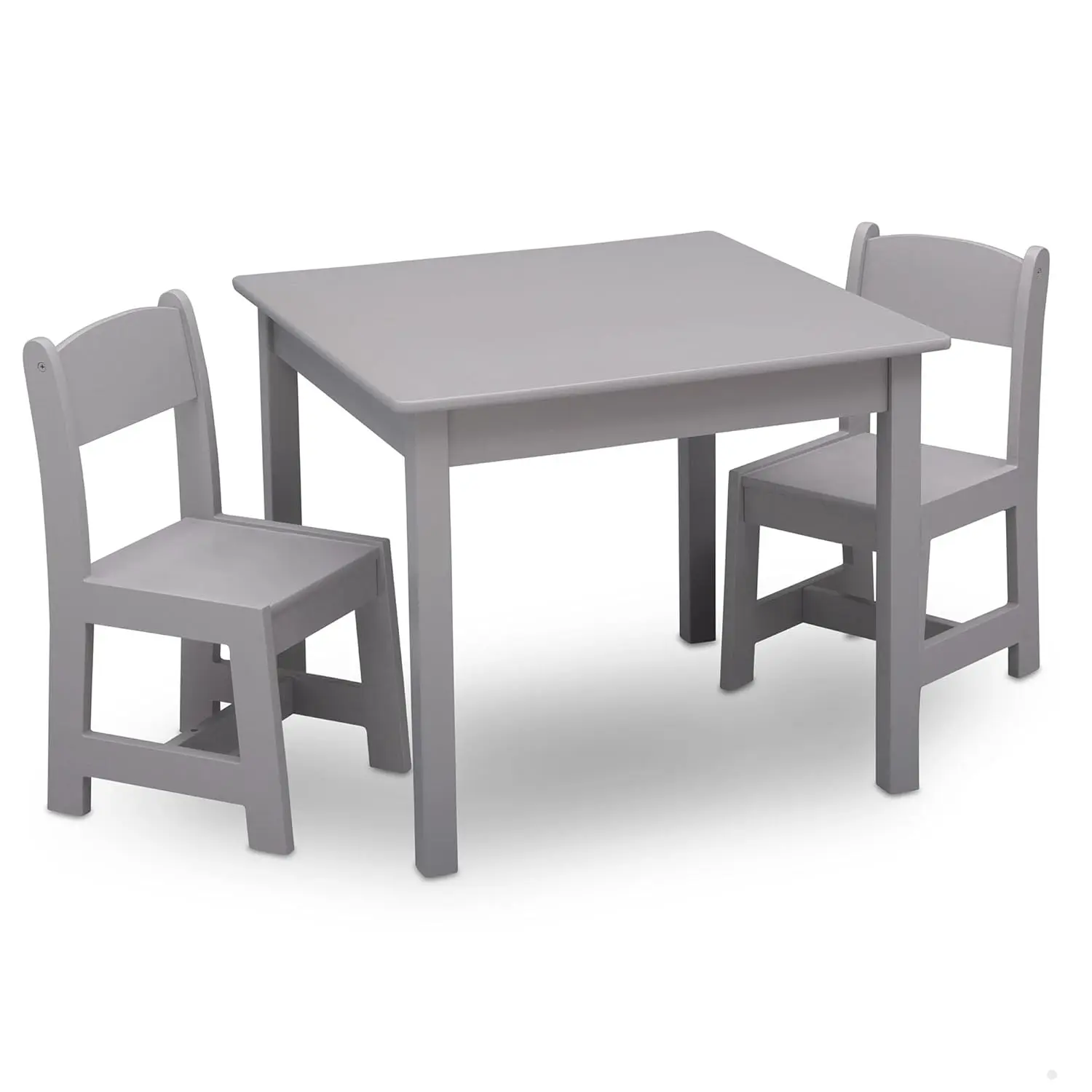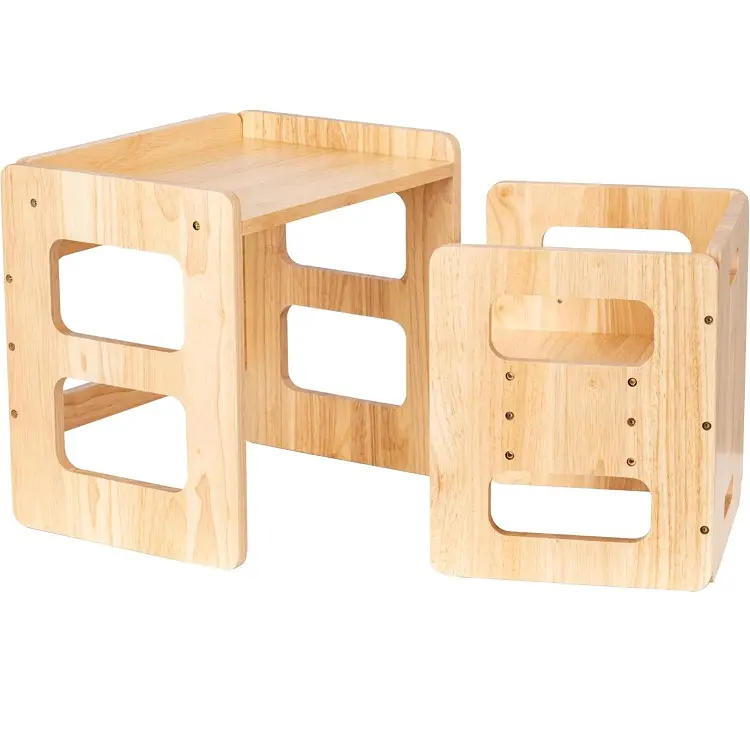In today's fast-paced world, the influence of furniture on our daily lives is often underestimated, especially when it comes to our children. This article delves into how thoughtfully designed furniture significantly impacts children's health and well-being, fostering everything from physical posture to emotional development. Understanding this profound connection is crucial for parents, educators, and anyone involved in creating nurturing environments for kids. Read on to discover how the right furniture is designed to promote healthy growth and create spaces where children thrive.
How Does Furniture Design Influence Children's Health and Well-being?
The influence of furniture extends far beyond mere functionality; it intricately shapes the environments where children learn, play, and grow. Furniture design is not just about aesthetics; it's about creating spaces that cater to the unique needs of children at different developmental stages. From the ergonomic high chair for toddlers to the study desks for older kids, each piece plays a crucial role in their daily lives. The right design and furniture choices can significantly foster physical comfort, encourage healthy posture, and even impact cognitive development.
Consider a classroom setting. Classroom furniture that is poorly designed can lead to discomfort, distraction, and even long-term health issues. Conversely, well-designed furniture in schools can foster engagement, improve focus, and create a more positive learning environments. At home, home furniture choices are equally vital. A child's bedroom, play area, and study space should be equipped with furniture that integrates seamlessly with their activities, promoting both physical and mental well-being. The design process behind children's furniture must prioritize their health and well-being above all else.
What Role Does Ergonomic Furniture Play in Child Development?
Ergonomic furniture is designed with the user's comfort and efficiency in mind, and for children, this is especially critical. Ergonomics refers to the systematic study of people's efficiency in their working environment. In the context of children’s furniture, ergonomic design focuses on creating pieces that support natural movement patterns, promote good posture, and minimize physical strain. This is not just about immediate comfort; it's about long-term health and well-being as children grow.

Ergonomic design in kids furniture prioritizes comfort and healthy posture.
Research has shown that ergonomically designed tables and chairs in classrooms, for example, can significantly improve children's concentration and reduce fatigue. Child-sized furniture that is ergonomic ensures that children can sit comfortably with their feet flat on the floor, knees at a 90-degree angle, and back properly supported. This helps prevent back pain, neck strain, and other musculoskeletal issues that can develop over time. The criterion for good children’s furniture must include ergonomic principles to promote healthy growth and development of children.
3. Design Trends in Children's Furniture for 2024: Focusing on Health and Well-being.
Looking ahead to 2024, design trends in children's furniture market are increasingly emphasizing health and well-being. Sustainable design is no longer just a niche concept but a mainstream criterion. Parents and educators are actively seeking furniture that promotes sustainable development and is made from eco-friendly materials. This includes solid wood children’s furniture from responsibly managed forests, non-toxic finishes, and durable construction that ensures longevity.
Another key trend is adaptability and customization. As children grow and their needs of children change, furniture that integrates adjustable features and modular designs is becoming increasingly popular. Think of desks that can be raised or lowered, storage units that can be reconfigured, and beds that can convert as the child ages. Furniture designers are also exploring innovative design ideas that incorporate elements of play and sensory stimulation. For instance, activity tables with built-in sensory bins, bookshelves with interactive elements, and seating options that encourage movement are gaining traction. These new design approaches aim to create learning environments and home spaces that are not only functional but also stimulating and beneficial for children's cognitive and emotional development.
How Can Interior Design with Child-Friendly Furniture Foster Positive Development?
Interior design, when thoughtfully executed with child-sized furniture, can profoundly foster positive development of children. Creating spaces that are both aesthetically pleasing and developmentally appropriate is key. Furniture and educational outcomes are intrinsically linked to the environment in which children learn and play. A well-designed room acts as a silent teacher, guiding children to explore, learn, and grow.
Consider the principles of Maria Montessori. Montessori classrooms are meticulously designed to create an environment that promotes independence and self-directed learning. Child-sized furniture is central to this philosophy, allowing children to easily access materials, move around freely, and take ownership of their space. At home, applying similar design concepts can be equally beneficial. Creating designated play areas, reading nooks, and study corners with appropriate design furniture promotes a sense of order and purpose. The design must consider not only functionality but also subjective factors like color, texture, and spatial arrangement to create an atmosphere that enhances creativity, focus, and a sense of responsibility in children.
The Connection Between Furniture and Educational Outcomes in Children.
The link between furniture and educational outcomes is more direct than many realize. Classroom furniture is not just a backdrop to learning; it's an active participant in the educational process. Research projects have consistently demonstrated that the type and arrangement of school furniture can significantly impact children’s behavior, engagement, and academic performance.
For instance, a study was conducted in several classrooms comparing traditional desks and chairs with more flexible and ergonomic seating options. The experimental results showed that children in classrooms with flexible seating exhibited improved focus, reduced fidgeting, and even better academic scores in some areas. Furniture that promotes collaboration, such as modular tables and comfortable seating arrangements, can also foster teamwork and communication skills. Furthermore, furniture designed to support different learning styles is crucial. Some children learn best while sitting upright at a desk, while others may benefit from reading in a beanbag chair or working at a standing desk. The design and development of furniture for educational settings should prioritize adaptability, ergonomics, and the creation of learning environments that are conducive to optimal cognitive development and positive children’s behavior.
Creating a Healthy Workspace for Children: Furniture Considerations.
Creating a healthy workspace for children at home is essential, especially in today's era of home-based learning and increased screen time. The furniture in a child's workspace plays a pivotal role in their posture, comfort, and ability to focus. An ergonomically designed desk and chair are fundamental. The desk height should be appropriate for the child's size, allowing them to work without slouching or straining. The chair should provide good lumbar support and be adjustable to ensure proper seating posture.

A well-designed workspace with ergonomic furniture is crucial for children's focus and comfort.
Beyond the desk and chair, consider storage solutions that keep the workspace organized and clutter-free. Children’s furniture like bookshelves, drawer units, and toy organizers can help maintain a tidy and stimulating environment. Natural light is also crucial for a healthy workspace. Position the desk near a window if possible, and ensure adequate artificial lighting for evening or darker days. The overall design concept should aim to create a workspace that is not only functional but also inviting and inspiring, encouraging children to engage in their tasks with enthusiasm and focus. Remember, a well-designed workspace contributes significantly to a child's mental well-being and academic success.
What are the Key Design Criteria for Children's Furniture to Promote Health?
Several key design criteria are essential when selecting children’s furniture to promote health and well-being. Ergonomics is paramount, as discussed earlier. Furniture must be designed to support natural posture, encourage movement, and minimize physical strain. Safety is another non-negotiable criterion. Children’s furniture should be sturdy, stable, and free from sharp edges or toxic materials. Compliance with international safety standards like ASTM or EN71 is crucial, especially for furniture industry manufacturers exporting to regions like the USA and Europe.
Material selection is also a critical criterion. Solid wood is an excellent choice due to its durability, sustainability, and non-toxic nature. Quality Solid Wood Kids Furniture is often preferred for its longevity and health and well-being benefits compared to furniture made from composite materials that may emit harmful chemicals. The finish of the furniture must also be considered. Opt for non-toxic, water-based finishes that are safe for children and environmentally friendly. Finally, adaptability and scalability are important design criteria. Furniture that integrates adjustable features or modular components can adapt to children grow and their changing needs, offering long-term value and utility. By carefully considering these design criteria, parents and educators can select furniture that promotes children’s health and well-being in all aspects.
How Does Child-Sized Furniture Support Development and Independence?
Child-sized furniture plays a crucial role in supporting development of children and fostering independence. Furniture that is designed to be the right scale for children empowers them to interact with their environment more effectively. Imagine a toddler trying to use an adult-sized chair and table – it’s not only uncomfortable but also hinders their ability to perform simple tasks independently. Child-sized furniture, on the other hand, allows children to reach, access, and manipulate objects with ease, promoting self-reliance and confidence.

Child-sized furniture promotes independence and confidence in children.
From Wooden 2 Step Stools for Kids that enable them to reach higher shelves to Kids Wood Table & 2 Chairs Set where they can comfortably eat, draw, or play, child-sized furniture makes daily lives easier and more enjoyable for children. In learning environments, child-sized furniture allows children to move around independently, choose their activities, and organize their materials without needing constant adult assistance. This fosters a sense of responsibility and self-direction, which are crucial for emotional development and skills development. Child-sized furniture is not just smaller furniture; it's designed to create an environment that supports children to explore, learn, and grow at their own pace, fostering independence and self-esteem.
Can Sustainable Design in Children's Furniture Contribute to Well-being?
Sustainable design in children’s furniture goes hand in hand with promoting health and well-being. Choosing eco-friendly and sustainable design options is not only beneficial for the environment but also directly impacts children's health. Sustainable design prioritizes the use of renewable materials, minimizes waste, and reduces the environmental footprint of production. Solid wood children’s furniture from sustainably managed forests is a prime example of sustainable design. Wood is a renewable resource, and when sourced responsibly, it is an environmentally sound choice.
Furthermore, sustainable design often emphasizes non-toxic materials and finishes. This is particularly important for children’s furniture, as children are more vulnerable to the harmful effects of chemicals found in some furniture materials and finishes. By choosing sustainable design furniture, parents and educators can create healthier indoor environments for children, reducing exposure to volatile organic compounds (VOCs) and other harmful substances. Sustainable design also promotes durability and longevity. Well-made, sustainable design furniture is built to last, reducing the need for frequent replacements and minimizing waste. Investing in sustainable design children’s furniture is an investment in both the planet and children’s health and well-being, contributing to a healthier future for all.
Considering Emotional Development: How Furniture Choices Matter.
Furniture choices have a subtle yet significant impact on emotional development. The environment that furniture promotes can influence a child's mood, sense of security, and emotional well-being. Creating spaces that are comfortable, inviting, and aesthetically pleasing can contribute to a positive emotional atmosphere. Consider the use of color and texture in furniture design. Soft, natural colors and textures can create a calming and nurturing environment, while bright, stimulating colors can energize and inspire creativity. The design idea should be to create a balanced sensory experience that supports emotional development.
Home furniture arrangements can also impact children and parents interactions and relationships. Creating cozy reading nooks, comfortable seating areas for family time, and play spaces that encourage interaction can foster stronger bonds and positive emotional connections. Furniture that integrates storage solutions can also contribute to emotional well-being by creating a sense of order and reducing clutter, which can be overwhelming for children. Even something as simple as a comfortable and inviting Classic Design Toddler Bed in Natural can contribute to a child's mental well-being by providing a safe and secure space for rest and relaxation. By consciously considering emotional development in design and furniture choices, we can create environments that nurture children's emotional health and happiness.
Summary of Key Takeaways:
- Furniture profoundly influences children's health and well-being, impacting physical posture, cognitive and emotional development.
- Ergonomic design is crucial for children's furniture to ensure comfort, support healthy posture, and prevent long-term health issues.
- 2024 furniture design trends emphasize sustainability, adaptability, and sensory stimulation to cater to children's evolving needs.
- Interior design with child-friendly furniture fosters positive development by creating developmentally appropriate and aesthetically pleasing spaces.
- Furniture in educational settings directly impacts learning outcomes, with flexible and ergonomic options improving focus and engagement.
- Creating a healthy workspace at home requires ergonomic desks and chairs, organized storage, and good lighting to support children's learning.
- Key design criteria for children's furniture include ergonomics, safety standards, sustainable materials, non-toxic finishes, and adaptability.
- Child-sized furniture promotes independence and self-reliance by allowing children to interact with their environment effectively.
- Sustainable design in children's furniture contributes to well-being by using eco-friendly, non-toxic materials and ensuring durability.
- Furniture choices impact emotional development by creating environments that are comfortable, inviting, and supportive of positive emotional experiences.
By understanding and applying these principles, we can create environments where children not only live and learn but truly thrive, supported by furniture that promotes their holistic health and well-being. As a Quality Solid Wood Kids Furniture Manufacturer from China, we, at Kids Furniture Factory, are committed to crafting designed furniture that aligns with these values, ensuring a healthier and happier future for children worldwide. We export our children’s furniture to the USA, North America, Europe, and Australia, catering to furniture retailers, children's furniture boutiques, educational institutions, interior designers, and daycare centers. Our product features include high-quality solid wood, durable and safe designs, non-toxic finishes, and compliance with international safety standards. We invite you to explore our range of Wooden Kids Wardrobe with Hanging Rod, Kids Wood Table & 4 Chair Set, Natural/Primary, and Montessori Weaning Table and Chair Set for Toddler and Babyt to experience the difference quality and thoughtful design can make.

Thoughtfully designed furniture contributes to a healthier and happier future for children.
Post time: Feb-20-2025





